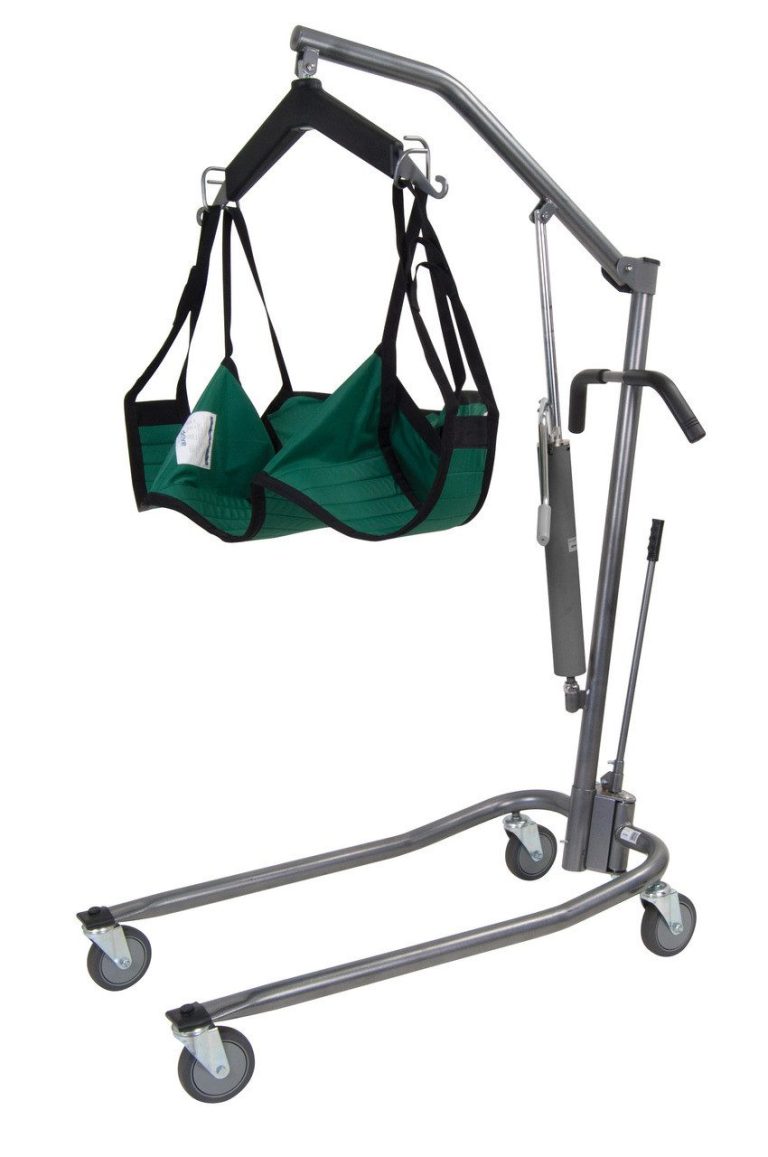
A Hoyer lift, also known as a patient lift or hoist/hydraulic lift/ jack hoist, plays a vital role in enhancing the quality of life for individuals with mobility challenges. The patient lift has revolutionized the way caregivers transfer and transport patients, providing a safe and efficient solution. This article explores the history of Hoyer lifts, the different types available, and guidelines to help you choose the right Hoyer lift for your patient.
The Hoyer lift, named after its inventor, Ted Hoyer, was first introduced between 1945 and 1950. Ted Hoyer was an American who was involved in a car accident while attending a game with his friends and became paralyzed. He later became employed as a sales magazine publisher and during this period, he created the Hoyer lift to aid his daily movements.
Inspired by the need for a safer and more manageable way to transfer patients, he developed the original patient hoist using basic mechanical principles. He later built a factory that grew to produce various hydraulic hoists, car lifts, among others.
The early Hoyer lifts were manual and required considerable effort from the caregiver to operate. Over the years, advancements in technology have led to the development of powered or electric Hoyer lifts. The electric lifts have made patient transfers more efficient and less physically demanding for both the patient and the caregiver.
Hoyer lifts have evolved to cater to various needs and preferences, resulting in several types of Hoyer lifts available in the market. The main types include:
Manual Hoyer lifts operate using a hydraulic pump system that requires the caregiver to pump a handle to raise or lower the patient. These lifts are cost-effective and suitable for transferring patients from bed to chair, toilet, or bath. However, they require physical effort from the caregiver and may not be ideal for transferring heavier patients.
Electric Hoyer lifts are powered by rechargeable batteries to provide a more convenient way to transfer patients. They are easy to use, requiring minimal physical effort from the caregiver. Electric lifts are suitable for various transfer scenarios and are ideal for those caring for heavier patients or individuals with limited upper body strength.
They are designed for patients who have some weight-bearing ability. These lifts provide support for the patient to stand up and transfer from a sitting to a standing position. Useful for rehabilitation and encouraging mobility in patients.
Pool and spa Hoyer lifts are designed to facilitate safe transfers of individuals with mobility challenges in and out of pools or spas. They are waterproof and corrosion-resistant, ensuring durability and longevity even in aquatic environments. These lifts help individuals enjoy therapeutic activities in the water.
Bariatric Hoyer lifts are heavy-duty lifts designed to handle larger patients weighing over 272 kilograms. These lifts are reinforced and equipped with sturdy frames and components to ensure the safe transfer and support of heavier individuals.
Portable Hoyer lifts are lightweight and designed for easy transport and storage. They can be disassembled into manageable parts, making them convenient for travel or moving between different locations. These lifts provide flexibility for caregivers who need to transfer patients in various settings.
Selecting the appropriate Hoyer lift for your patient is crucial to ensure their safety, comfort, and ease of use.
Assess the patient's mobility and weight-bearing capabilities. Different types of Hoyer lifts are suitable for various levels of movement, ranging from those who require full assistance to those who can partially bear weight.
Ensure the Hoyer lift's weight capacity exceeds the patient's weight.
If you anticipate transferring the patient to a pool or spa for hydrotherapy, a pool and spa Hoyer lift would be appropriate. For home use or on-the-go transfers, a portable Hoyer lift may be the best choice.
Assess the caregiver's physical capabilities and strength. If the caregiver has limited upper body strength or needs a more convenient solution, an electric Hoyer lift would be the most suitable option.
Consider the budget available for the Hoyer lift. Manual Hoyer lifts are more affordable, but electric lifts offer added convenience and ease of use. Evaluate the long-term benefits and balance them with the initial investment.
The Hoyer lifts provide invaluable assistance to caregivers and enhance the mobility and independence of patients with limited mobility. By selecting the appropriate Hoyer lift based on the patient's needs and circumstances, caregivers can ensure safe and efficient transfers, promoting a better quality of life for their patients